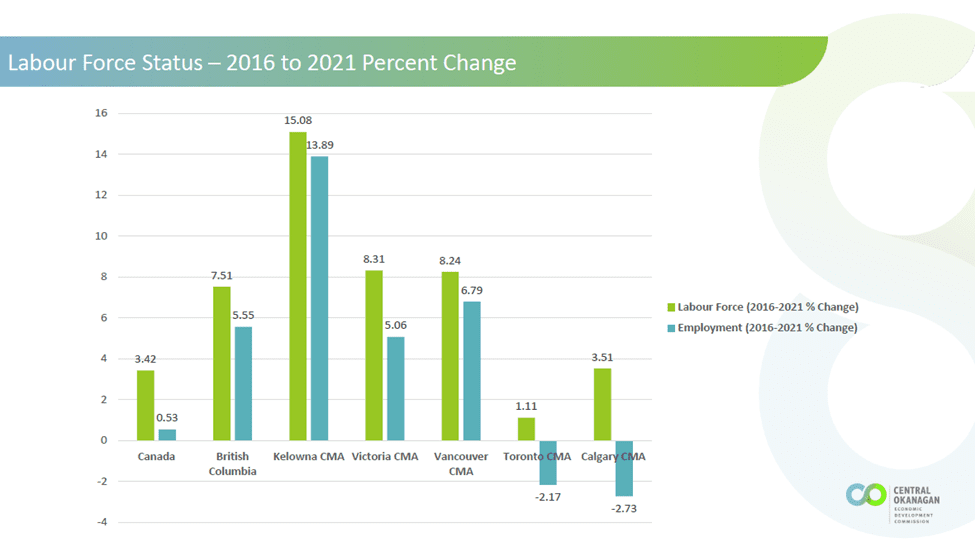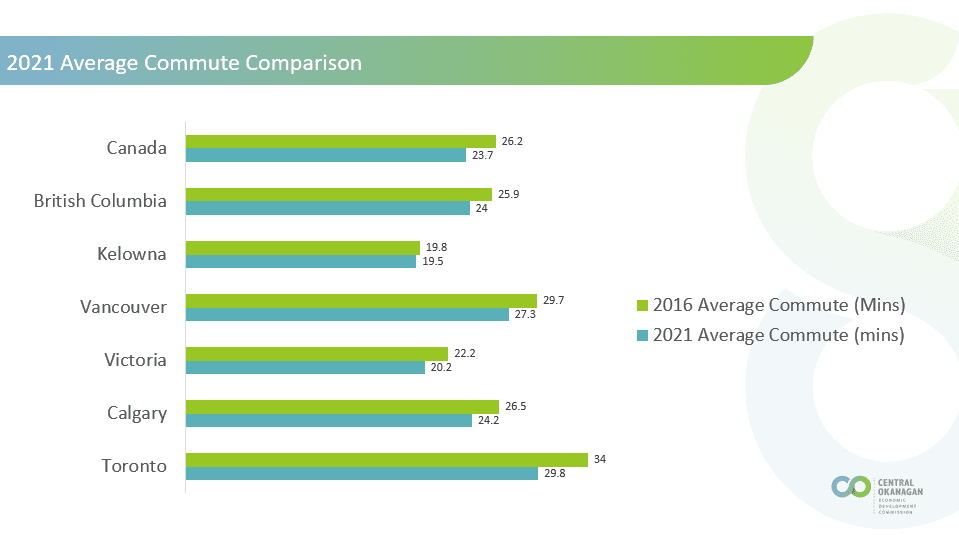7 Labour Force Insights from the 2021 Census
Uncategorized December 1, 2022

Yesterday, Statistics Canada shared the final release of data from the 2021 Census. As each set of data was released throughout the year, COEDC team dove into the numbers and shared highlights and takeaways from a regional perspective (see links to all releases at the bottom of this post).
Yesterday’s release focused on Education, Labour and Commuting. While rising interest rates are beginning to do their job to slow the Canadian economy, we know that labour shortages are not easing despite the downturn, and are not anticipated to be resolved anytime soon. Employers across Canada are reporting staffing challenges and the Central Okanagan is no exception, making understanding the region’s labour force especially important.
Earlier this year, the Population and Age census releases told us that the number of seniors (65+) in the Central Okanagan increased by 20.3% from 2016-2021. This is in line with the Canadian increase of 18.3%. Where the Central Okanagan bucks the national trend is in the increase in working age population. The number of 15–64 year-olds in the region increased 12.6% census to census, compared to a national increase of only 2.5%, pointing to changing demographics in the region.
Here are a few insights on the regional labour force to take away from yesterday’s data release:
- The Labour Force is growing: Both Labour Force (people aged 15+ who want to be employed), and Employment (people actually employed) in the region grew at a rate higher than the Canadian and British Columbian average, and higher than Victoria, Vancouver, Toronto and Calgary.

- The industries they work in are changing: The three industry sectors that saw the largest increase in their share of the labour force between 2016 and 2021 include:
- Professional, scientific and technical services (from 6.6% to 8%);
- Health care and social assistance (from 12.9% to 14.0%);
- Education services (from 6.1% to 7%)
- They are more university educated than ever: While the region still lags behind the national (64.8%) and provincial (63.9%) averages of people with post-secondary education at 63%, that is changing. The number of people with a university degree at the bachelor’s level or higher increased by 6.3% from 2016 to 2021. For women, that increase was 8%.

- There are more certified tradespeople: 11.6% of Central Okanagan residents aged 25-64 held an apprenticeship or trades certificate or diploma, compared to 9.1% of British Columbians and 10.8% of Canada. That number, however, saw a slight decline of 1.1% from 2016-2021.
- They have shorter commute times: The average Central Okanagan resident commuted 19.5 minutes, compared to 23.7 minutes for the average Canadian.

- They didn’t work from home as much: 10.3% more Central Okanagan residents worked from home in 2021 compared to 2016, compared to a 14.1% increase across BC and 16.9% across Canada.
- Most work locally: Only 4.9% of Central Okanagan residents reported commuting outside of the region for work, and only 1.3% commute to a different province or territory.
Central Okanagan 2021 Census Release Highlights:


